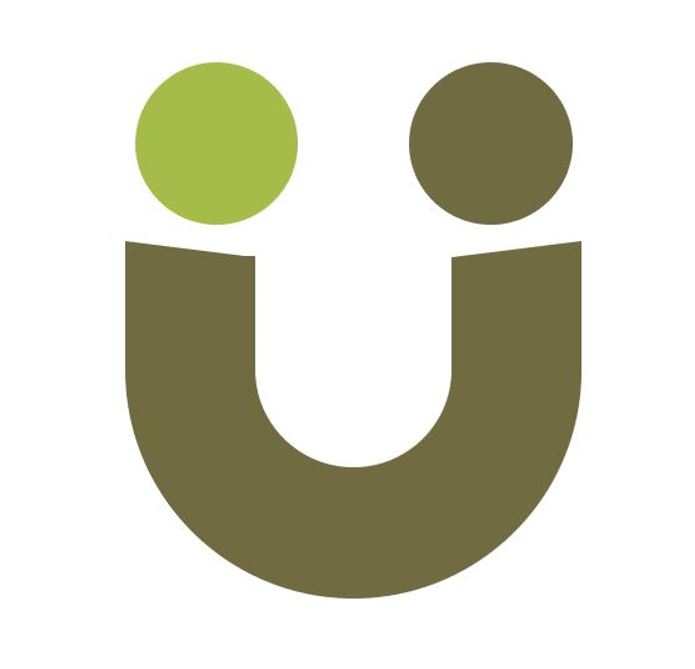Teacher Centred vs. Learner Centred Methods of Teaching
While traditional teacher-centered methods emphasize the instructor as the primary source of knowledge dissemination, learner-centered approaches prioritize the needs, interests, and active involvement of students in the learning process.

These Methods are discussed below.
Teacher centered Methods of Teaching
Teacher-centered methods are based on essentialism and perennialism, emphasizing the transmission of essential knowledge and timeless ideas by the teacher. This approach involves teachers directing the learning process and students passively receiving information through various means. In this approach, the students are viewed as “empty vessels” whose primary role is to passively receive information with an end goal of testing and assessment. The teacher is looked upon by the learners as an expert or an authority.
In this approach, development of curriculum and control of the learning process is retained by the teacher. The teacher’s role is to create an environment which stimulates the desired behavior and discourages behaviors that are believed to be undesirable. In other words, teachers control the learning situation to obtain the desired outcome, guided by generalized characteristics of the learners.
Characteristics of Teacher-centered Methods of Teaching
The major characteristics of the teacher-centered methods are as follows:
- The teacher is the center of knowledge and in charge of learning;
- Students are usually passively receiving information;
- The instructor’s role is to be primary information giver and primary evaluator;
- Teachers and professors act as the sole supplier of knowledge, and under the direct instruction model, teachers often utilize systematic, scripted lesson plans;
- Teacher centered instruction is fairly low-tech, often relying on the use of textbooks and workbooks instead of computers; and assessments are in many cases only carried out as summative and not formative evaluations and they rarely address qualitative issues of the learner’s progress.
Types of Teacher centered Methods of Teaching
Some commonly used teacher centered methods are given below.
1. Lecture
In the lecture method, teachers share organized information with students in a traditional way. It is useful for teaching large groups, but it may not engage learners or assess their understanding effectively.
2. Lecture cum Demonstration
In this method, teachers not only share information but also demonstrate actions to help students understand better through observation.
3. Questions-answer
This approach, inspired by the Socratic method, involves asking a series of questions to challenge students’ assumptions and encourage critical thinking.
4. Tutorial
In the tutorial method, students are grouped based on their strengths and weaknesses in various subjects. Each group works with a different teacher who provides individual guidance. When students in a group face similar difficulties, they receive group instruction. To make this method effective, students with similar abilities and challenges should be in the same group to minimize the number of groups. Teachers should treat all students fairly during guidance to ensure everyone has an equal opportunity to improve.
5. Team Teaching
Team teaching involves a group of instructors working purposefully, regularly, and cooperatively to help a group of students of any age, learn. Teachers together set goals for a course, design a syllabus, prepare individual lesson plans, teach students, and evaluate the results. In team teaching, more than 2 teachers plan and teach the same class as per their expertise.
Learner-centered methods of Teaching
Learner-centered methods emerged in the 19th century, recognizing the active role of learners in constructing knowledge. Learning is viewed as a dynamic process, where learners actively engage, reflect, and construct meaningful understanding. It involves active manipulation, construction, reflection, intentionality, complexity, contextualization, collaboration, and conversation to foster meaningful learning experiences.
Characteristics of Learner-centered methods of Teaching
The major characteristics of the learner-centered methods are as follows:
- In learner-centered instruction, the focus shifts from the teacher as the center of knowledge to the learner as the central figure in the learning process.
- Instead of passively receiving information, students in learner-centered instruction actively engage in the learning process, participating in discussions, problem-solving, and critical thinking.
- The instructor’s role in learner-centered instruction is to facilitate and guide the learning process rather than being the primary information giver and evaluator.
- Learner-centered approaches emphasize collaborative learning, where students not only learn from teachers but also from their peers, making knowledge acquisition a more dynamic and interactive process.
- Technology is often integrated into learner-centered instruction, with the use of computers, online resources, and various multimedia tools to enhance the learning experience.
- Assessment in learner-centered instruction includes both formative and summative evaluations, providing continuous feedback to learners and addressing qualitative aspects of their progress, rather than relying solely on traditional, summative assessments.
Types of Learner-centered methods of Teaching
Some commonly used Learner centered Methods are given below.
1. Discussion
Discussion is a teaching method where students come together in a group to talk about a topic. They share what they know, exchange ideas, and express their opinions. This helps everyone in the group to understand the topic better because they learn from each other. It’s like a collective conversation where each participant contributes their knowledge and views, making it a collaborative learning experience.
2. Panel Discussion
In a panel discussion, a group of experts who know a lot about a specific topic gather to talk about it. The unique thing is that these experts often have different viewpoints or ideas about the topic. This allows learners to hear diverse perspectives and gain a deeper understanding of the subject. It’s like getting insights from different angles, helping learners see the bigger picture.
3. Debate
Debate is a method of teaching where students explore controversial or hot-button topics. They practice forming strong arguments in favor of or against specific ideas. It’s a way to develop skills in constructing logical arguments and counterarguments. This helps learners think critically, articulate their thoughts, and understand different sides of a complex issue. It’s like a structured, respectful argument where learners learn to defend their opinion and consider opposing viewpoints.
4. Brainstorming
It is a method to quickly generate lots of creative ideas by encouraging everyone to share their thoughts without judgment. All ideas, even the crazy ones, are welcome. These ideas are written down as they come, and the process is usually lively and energizing. Later, the ideas can be discussed and evaluated to find the best ones. Brainstorming works well with many people and doesn’t take much time, but it’s important not to let it go on for too long, as it may lose people’s interest.
5. Role play
In role play, participants use their own experiences to play a real life situation. When done well, role play increase the participants’ selfconfidence, give them the opportunity to understand or even feel empathy for other people’s viewpoints or roles, and usually end with practical answers, solutions or guidelines. Some trainees may feel a role play is too exposing, threatening or embarrassing. This reluctance may be overcome at the outset by careful explanation of the objectives and the outcome.
6. Cooperative Learning
Cooperative learning is a way of teaching where students work together in groups. They learn from each other and talk about the things they are learning. This makes learning more interesting. Teachers use this method to see how well students can work in a team, lead, and talk about their ideas. In cooperative learning, students can have group projects and discussions. The teacher helps when needed.
7. Case Studies
Case studies are a teaching method where students study specific scenarios or situations. They observe, analyze, record, and sometimes even make recommendations based on the given case. These cases are like real-life stories that students discuss and learn from. They are often based on actual events, which makes them more urgent and realistic. It’s a bit like watching a situation unfold and then discussing what you would do if you were part of it, even though you’re mostly an observer rather than an active participant. This method is commonly used in higher education, especially in fields like business and law.
8. Inquiry-Based Learning
A teaching approach where students explore and learn by asking questions, investigating, and finding answers. It is not just about memorizing facts; it is about understanding concepts and ideas by being curious and finding solutions. Students take an active role in their learning, which helps them become lifelong learners.
9. Experiential Learning
In this approach, students learn by doing things and reflecting on their experiences. It’s like learning from real-life events and thinking about what happened. Students actively participate in hands-on activities, fieldwork, or group projects, which helps them understand and remember what they’ve learned through their own experiences.
UGC NET Previous Year Questions (Teacher centred vs. Learner centred methods)
1.) Which of the following is a Group-centered method of teaching-learning? (08 Oct 2022 Morning)
A.Providing lecture notes
B.Team-teaching
C.Demonstration method
D.Brainstorming
ANS. D
2.) From the following list of methods of teachings used in institution of higher learning identity those which are learner centred (UGC NET 24th Sept 2020 Morning paper)
A. Project work
B. Chalk and Talk
C. Lecturing with audio visual
D. Computer aided instructions
E. Simulation and Role playing
Choose the correct answer from the options given below:
(A) B, C and D only
(B) A, D and E only
(C) A, B and C only
(D) C, D and E only
ANS. B
3.) Which of the following is a teacher-centered method? (08 Oct 2022 Evening)
(A) Problem solving
(B) Discussion method
(C) Inquiry approach
(D) Demonstration method
ANS. D
4.) Which of the following is a learner-centered method? (10 Oct 2022 Evening)
(A) Inquiry approach
(B) Lecture method
(C) Demonstration method
(D) Team teaching
ANS. A
5.) Which of the following methods of teaching-learning is ‘Teacher Centric’? (12 July 2022 Evening)
(A) Chalk and Talk
(B) Case-studies discussion
(C) Activity based
(D) Field work
ANS. A
6.) Which of the following is outside the Teacher-Centric Method? (14 Oct 2022 Evening)
(A) Demonstration
(B) Team teaching
(C) Inquiry approach
(D) Lecture method
ANS. C
7.) In student centred approach, a teacher: (04 Dec Morning 2021)
(A) maximizes use of extrinsic rewards.
(B) encourages students to take increased responsibility.
(C) uses appropriate teaching-learning materials for effective teaching.
(D) teacher tries to relate present with the past.
ANS. B



